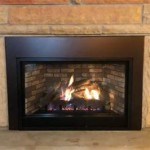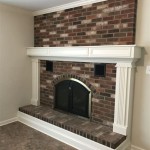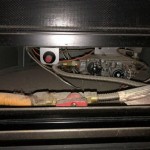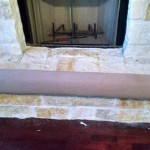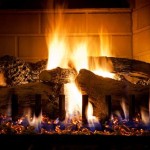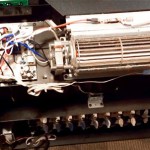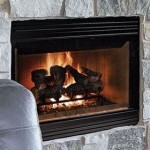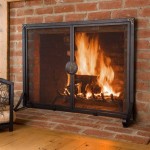Understanding the Cost to Install a Fireplace
The installation of a fireplace can significantly enhance the ambiance and value of a home. The cost associated with this home improvement project varies considerably, contingent upon several factors that include the type of fireplace, installation requirements, and regional variations. A comprehensive understanding of these cost drivers is essential for effective budgeting and planning.
This article provides a detailed overview of the elements influencing the overall cost of fireplace installation, aiming to equip homeowners with the knowledge necessary to navigate the process effectively. It delves into the specifics of different fireplace types, the complexities of installation procedures, and the impact of labor and material costs. The intention is to deliver a clear and informative guide to understanding and managing the financial aspects of fireplace installation.
Factors Influencing Fireplace Installation Costs
Several key factors contribute to the final cost of installing a fireplace. These include the type of fireplace selected, the complexity of the installation process, the materials required, and the prevailing labor rates in the region.
The type of fireplace is a primary determinant of cost. Wood-burning fireplaces, gas fireplaces, and electric fireplaces each have distinct price points. Wood-burning fireplaces often require a chimney or the installation of a flue system, which can significantly increase the overall expense. Gas fireplaces demand gas line connections, adding to the complexity and cost. Electric fireplaces typically have lower upfront costs, but their long-term operational expenses can vary depending on electricity rates.
The complexity of the installation directly impacts labor costs. Installing a fireplace in an existing structure requires careful planning and execution. Factors such as wall modifications, chimney construction, or gas line extension can add substantially to the overall cost. Additionally, permits and inspections are often required, further contributing to the expense. A pre-existing fireplace opening or chimney shaft often simplifies the installation process, reducing both time and labor costs. Conversely, a complete renovation or the creation of a new fireplace opening will generally increase the overall project expense.
Material costs encompass a wide range of items, including the fireplace unit itself, venting systems, framing materials, finishing materials (such as brick, stone, or tile), and accessories. The quality and type of materials chosen will directly impact the overall cost. High-end materials and custom designs will invariably increase the budget. For example, using natural stone for the fireplace surround will be more expensive than using manufactured stone veneer.
Labor costs fluctuate based on the region and the expertise of the installer. Metropolitan areas typically have higher labor rates compared to rural areas. It is crucial to obtain multiple quotes from qualified contractors to ensure competitive pricing. Selecting an experienced and licensed contractor is essential to ensuring that the installation meets safety standards and local building codes. In addition, a contractor can properly assess the installation site and provide an accurate estimate of all required modifications and costs.
Detailed Cost Breakdown by Fireplace Type
To understand the potential expenses, it is crucial to examine the cost breakdown for each type of fireplace. The following sections detail the typical cost ranges for wood-burning, gas, and electric fireplaces, including materials, installation, and optional add-ons.
Wood-Burning Fireplaces: Wood-burning fireplaces are often the most expensive to install due to the requirement for a chimney or flue system. The cost of the fireplace unit itself can range from $1,500 to $5,000, depending on the size, style, and efficiency. Chimney installation or repair can add an additional $2,000 to $10,000 or more, depending on the height, construction, and any necessary repairs. Framing, finishing, and hearth construction can contribute another $1,000 to $5,000, depending on the desired aesthetic. Labor costs for wood-burning fireplace installations typically range from $1,000 to $3,000 or more, depending on the complexity of the project. This type of fireplace often requires ongoing maintenance, including chimney cleaning and occasional repairs, which contribute to long-term costs.
Gas Fireplaces: Gas fireplaces generally have lower upfront costs than wood-burning fireplaces, but they require a gas line connection, which can add to the expense. The cost of a gas fireplace unit ranges from $800 to $4,000, depending on the size, style, and features. Gas line installation can cost between $500 and $2,000, depending on the distance from the main gas line and any necessary trenching or modifications. Venting systems for gas fireplaces can range from $200 to $1,000, depending on the type and length required. Framing, finishing, and hearth construction costs are similar to wood-burning fireplaces, ranging from $1,000 to $5,000. Labor costs for gas fireplace installations typically range from $500 to $2,000, depending on the complexity of the project. Gas fireplaces benefit from user convenience and often require less maintenance than wood-burning alternatives.
Electric Fireplaces: Electric fireplaces are the most cost-effective option in terms of initial investment. The cost of an electric fireplace unit ranges from $100 to $2,000, depending on the size, style, and features. Installation costs are typically minimal, often requiring only plugging the unit into an electrical outlet. Framing and finishing costs can range from $500 to $3,000, depending on the desired aesthetic and any custom work. Labor costs for electric fireplace installations are generally low, ranging from $100 to $500 for any necessary electrical work or framing. While electric fireplaces have lower upfront costs, their long-term operational expenses can be higher due to electricity consumption. The cost per hour of operation varies depending on local electricity rates and the fireplace's heating capacity.
It's critical to note that these are estimated ranges. Actual costs can vary significantly based on specific project requirements and regional pricing. Obtaining multiple quotes from qualified contractors is strongly recommended to ensure an accurate budget.
Factors Affecting Installation Complexity
The level of complexity involved in the fireplace installation significantly impacts the total cost. Several factors contribute to this complexity, including the existence of a pre-existing chimney, the need for gas line extensions, and structural modifications to the home.
Pre-existing Chimney: The presence of a pre-existing chimney can drastically reduce installation costs, especially for wood-burning fireplaces. However, the condition of the existing chimney must be thoroughly evaluated. A chimney inspection by a qualified professional is essential to identify any structural issues, such as cracks, deterioration, or blockages. Repairing or relining an existing chimney can add to the overall cost but is crucial for safety and proper ventilation. If the existing chimney is not suitable for the selected fireplace type, a new chimney or flue system may be required, negating any potential cost savings.
Gas Line Extensions: For gas fireplaces, the proximity of an existing gas line is a significant factor influencing installation costs. If a gas line is not readily accessible, extending the line from the main supply can be a complex and expensive undertaking. Trenching, pipe fitting, and gas pressure testing are required to ensure a safe and compliant installation. The distance of the extension, the type of terrain, and any obstacles (such as underground utilities) will all impact the cost. In some cases, upgrading the gas meter or gas supply line may be necessary to accommodate the added demand of the fireplace.
Structural Modifications: Structural modifications to the home can significantly increase installation costs. This might include framing work to create a new fireplace opening, reinforcing walls to support the weight of the fireplace, or altering electrical wiring to accommodate an electric fireplace. These modifications require careful planning and execution to ensure structural integrity and compliance with building codes. Complex structural work can necessitate the involvement of an architect or structural engineer, adding to the overall project expense. Furthermore, structural modifications often require permits and inspections, which can also contribute to the total cost.
Proper planning and assessment are essential to identify potential complexities and accurately estimate the cost of fireplace installation. Consulting with experienced contractors and obtaining detailed quotes can help homeowners avoid unexpected expenses and ensure a successful project.
Beyond these factors, consider the cost of permits. Most municipalities require permits for fireplace installation, particularly for gas and wood-burning units. The cost of permits varies depending on the location and the scope of the project. Failing to obtain the necessary permits can result in fines and delays, and may also compromise the safety and legality of the installation. Ensure all installations adhere to local building codes and fire safety regulations.
Another aspect to consider is the long-term maintenance costs associated with each fireplace type. Wood-burning fireplaces require regular chimney cleaning and inspection. Gas fireplaces may require periodic servicing of the gas valve and venting system. Electric fireplaces typically have lower maintenance requirements, but replacement parts may be necessary over time. Factoring in these ongoing maintenance costs can provide a more accurate assessment of the total cost of ownership.
Finally, energy efficiency can also be a deciding factor. Consider the energy efficiency ratings of different fireplace models to estimate long-term heating costs. High-efficiency models may have a higher upfront cost, but they can save money on energy bills over time. Research energy-efficient options and consider the long-term savings when making a purchase decision.

How Much Does It Cost To Put In A Fireplace Direct Fireplaces

What Does It Cost To Install A Fireplace Vs Wood Stove Stamford Fireplaces

How Much Does A Gas Fireplace Cost Fireplaces Direct Learning Center

How Much Does A Gas Fireplace Cost Fireplaces Direct Learning Center

How Much Does It Cost To Install A Gas Fireplace Homeserve Usa

2024 Fireplace Installation Costs Gas Wood Burning Electric

How Much Does An Electric Fireplace Cost 2024 Data

Fireplace Installation Cost Toronto The

Gas Fireplace Cost Guide Unit Add Ons Installation More

Fixr Com Cost To Install A Fireplace Build
Related Posts

